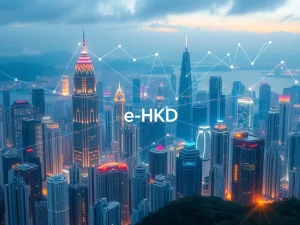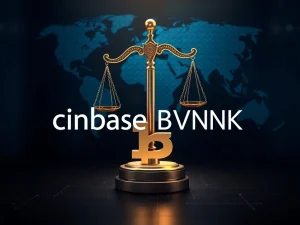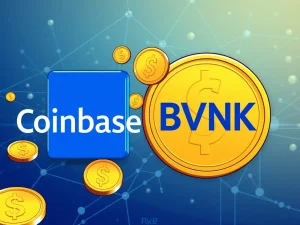Revolutionary Intent-Based Solutions Unlock DeFi Liquidity

Decentralized Finance (DeFi) has promised a financial revolution, yet it’s often plagued by a frustrating issue: fragmented liquidity. Imagine trying to trade your favorite tokens, only to find them scattered across various platforms, making seamless transactions a daunting task. But what if there was a groundbreaking approach to solve this? Enter intent-based solutions – a beacon of hope in the DeFi space, promising to streamline cross-chain interactions and significantly improve user experience. Let’s explore how these innovative solutions are poised to reshape the future of DeFi liquidity.
Understanding DeFi Liquidity Fragmentation: The Core Challenge
Before we dive into solutions, it’s crucial to grasp the problem. DeFi liquidity fragmentation arises because DeFi ecosystems are spread across numerous independent blockchains. Each blockchain operates in silos, leading to isolated pools of liquidity. This creates several pain points:
- Reduced Capital Efficiency: Liquidity is scattered, preventing optimal utilization of assets. Traders might need to hold assets on multiple chains, locking up capital.
- Increased Transaction Complexity: Users must navigate multiple bridges and exchanges to move assets and execute trades across different chains, adding complexity and friction.
- Higher Slippage and Costs: Fragmented liquidity can lead to lower trading volumes on individual platforms, increasing slippage and transaction costs for users.
- Poorer User Experience: The overall DeFi experience becomes cumbersome and less user-friendly, hindering wider adoption.
Imagine a scenario where you want to swap tokens from Ethereum to Solana. Currently, you might need to use a bridge, manually move your assets, and then execute the swap on a Solana-based DEX. This multi-step process is not only time-consuming but also introduces risks and complexities. Intent-based solutions aim to eliminate these hurdles.
Intent-Based Solutions: A Smarter Approach to DeFi
So, what exactly are intent-based solutions, and how do they differ from traditional DeFi mechanisms? In essence, they shift the focus from how a transaction is executed to what the user intends to achieve. Instead of users manually navigating complex steps, they simply express their desired outcome – their intent – and the system intelligently handles the execution.
Think of it like this: instead of telling a taxi driver every turn to take, you simply tell them your destination. Intent-based solutions in DeFi work similarly. Users express their intent – for example, “swap ETH for SOL” – and the underlying infrastructure figures out the most efficient and cost-effective way to fulfill that intent, potentially across multiple chains and liquidity sources.
Key Benefits of Intent-Based DeFi Solutions
The adoption of intent-based solutions can unlock a plethora of advantages for the DeFi ecosystem:
- Simplified Cross-Chain Interactions: Users can seamlessly interact with DeFi across different blockchains without needing to understand the technical complexities of bridges or chain-specific protocols.
- Enhanced User Experience: By abstracting away complexity, intent-based systems make DeFi more accessible and user-friendly, attracting a broader audience.
- Optimized Liquidity Utilization: By aggregating liquidity across chains, these solutions can improve capital efficiency and reduce slippage for traders.
- Reduced Transaction Costs: Intelligent routing and execution can minimize gas fees and other transaction costs, making DeFi more affordable.
- Increased Security: By streamlining processes and reducing manual interventions, intent-based systems can potentially minimize security risks associated with complex cross-chain operations.
Examples of Intent-Based Solutions in DeFi
While still in their early stages, several projects are pioneering intent-based solutions in DeFi. Here are a few examples illustrating different approaches:
| Solution Type | Description | Potential Benefits |
|---|---|---|
| Intent-Centric Aggregators | Platforms that aggregate liquidity across multiple DEXs and chains, routing trades based on user intent for optimal pricing and execution. | Improved price discovery, reduced slippage, simplified cross-chain trading. |
| Intent-Based Order Routing Protocols | Protocols that allow users to express complex trading intents (e.g., limit orders, TWAP orders) that are automatically executed across various liquidity venues. | Advanced trading capabilities, automated strategy execution, enhanced capital efficiency. |
| Cross-Chain Intent Networks | Networks designed to facilitate seamless cross-chain communication and transaction execution based on user intents, leveraging interoperability protocols. | Native cross-chain DeFi experiences, unified liquidity pools, simplified asset management across chains. |
Addressing the Challenges of Intent-Based DeFi
Despite their immense potential, intent-based solutions are not without challenges. Some key hurdles to overcome include:
- Complexity of Implementation: Developing robust and secure intent-based systems requires sophisticated engineering and a deep understanding of cross-chain interoperability.
- Security Considerations: Ensuring the security of intent execution across multiple chains and protocols is paramount to prevent exploits and vulnerabilities.
- Standardization and Interoperability: Establishing common standards and ensuring interoperability between different intent-based solutions will be crucial for widespread adoption.
- User Education: Educating users about the benefits and functionalities of intent-based systems will be necessary to drive adoption and build trust.
The Future is Intent-Driven: Embracing the Paradigm Shift
Intent-based solutions represent a significant paradigm shift in DeFi. By prioritizing user intent over technical complexities, they pave the way for a more user-centric, efficient, and interconnected DeFi ecosystem. As these solutions mature and gain wider adoption, we can expect to see a dramatic improvement in DeFi liquidity management, cross-chain interactions, and overall user experience. The journey towards a truly seamless and accessible decentralized financial future is being paved by the innovative power of intent.
Conclusion: Unlocking DeFi’s Full Potential with Intent
In conclusion, intent-based solutions offer a compelling pathway to overcome the persistent challenge of DeFi liquidity fragmentation. By simplifying cross-chain interactions, optimizing liquidity utilization, and enhancing user experience, these solutions are poised to revolutionize decentralized finance. While challenges remain, the potential benefits of intent-driven DeFi are undeniable. As the space continues to evolve, embracing intent-based approaches will be crucial to unlocking the full potential of DeFi and making it accessible to a global audience. The future of DeFi is intelligent, intuitive, and intent-driven.







